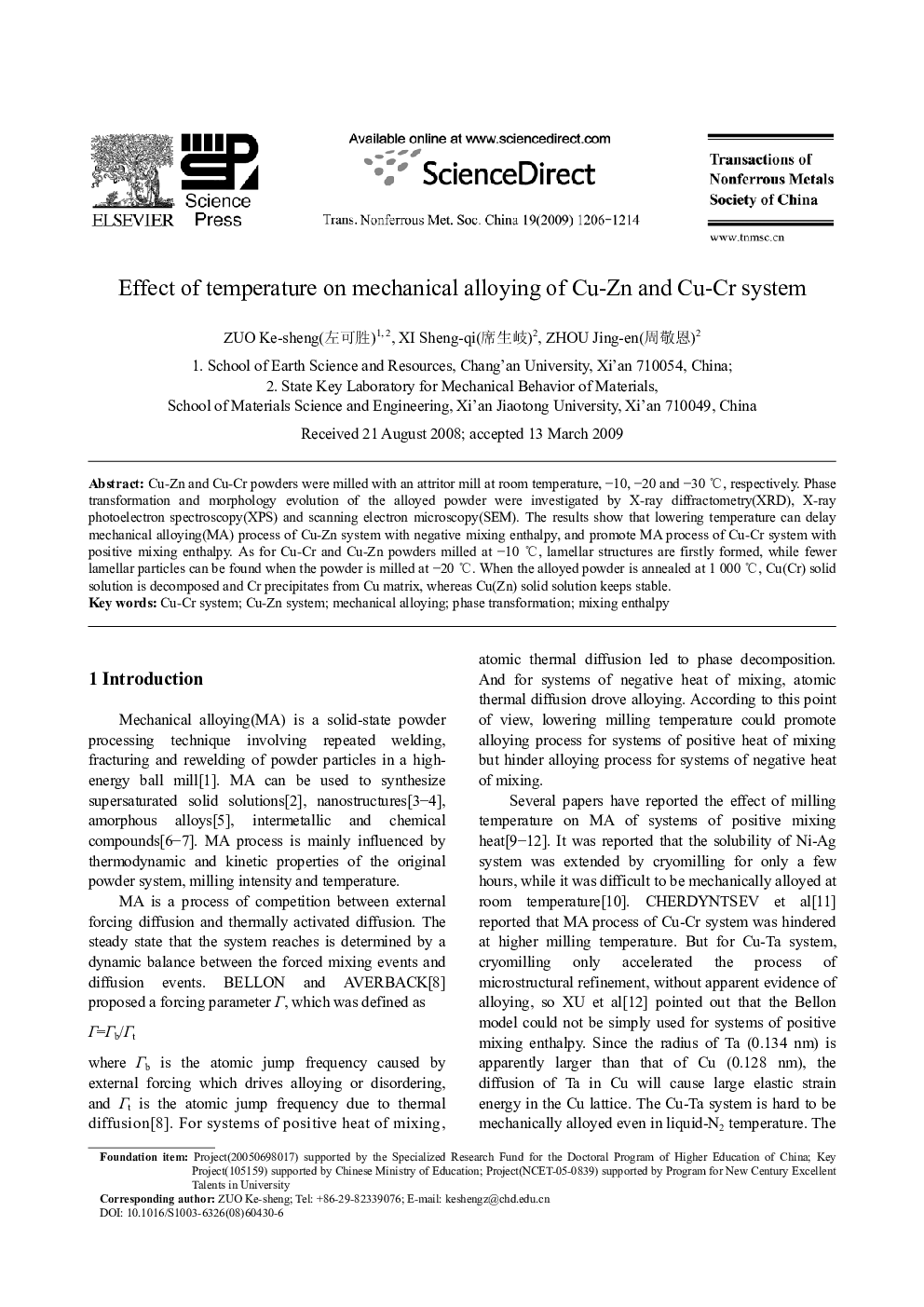| Article ID | Journal | Published Year | Pages | File Type |
|---|---|---|---|---|
| 1640552 | Transactions of Nonferrous Metals Society of China | 2009 | 9 Pages |
Cu-Zn and Cu-Cr powders were milled with an attritor mill at room temperature, −10, −20 and −30 °C, respectively. Phase transformation and morphology evolution of the alloyed powder were investigated by X-ray diffractometry(XRD), X-ray photoelectron spectroscopy(XPS) and scanning electron microscopy(SEM). The results show that lowering temperature can delay mechanical alloying(MA) process of Cu-Zn system with negative mixing enthalpy, and promote MA process of Cu-Cr system with positive mixing enthalpy. As for Cu-Cr and Cu-Zn powders milled at −10 °C, lamellar structures are firstly formed, while fewer lamellar particles can be found when the powder is milled at −20 °C. When the alloyed powder is annealed at 1 000 °C, Cu(Cr) solid solution is decomposed and Cr precipitates from Cu matrix, whereas Cu(Zn) solid solution keeps stable.
